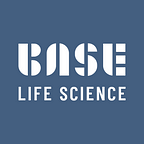Crucial CRM needs in the context of Cell and Gene Therapies
As more and more companies have embraced cell and gene therapies (CGT) to cure disease, it becomes evident that a standard commercial excellence approach is not fitting the needs of those new business models. The traditional CRM represents this traditional approach towards sales force effectiveness. Therefore, this blog explores some of the key differences we foresee at BASE based on multiple process implementations in various life sciences firms.
At BASE, we define 5 significant areas of impact on the CRM when moving from traditional life science to CGT. This post will address them one by one and explore what it entails for the systems.
The first critical dimension of change relates to the stakeholder focus. HCPs are considered the key target group in the standard model, wherewith coverage and frequencies are weighed high. However, in a CGT setting, the primary goal is to enable the hospital to administer the treatment to the patient. Thus, there is a fundamental shift of the focus from HCPs being the prescriber to having hospitals become partners, requiring the collection of different data sources for HCPs. Yet, as most providers only have limited coverage in those areas, the field force must obtain capabilities to create records, considering all the potential GDPR implications that this may involve.
The second difference lies in the type of segmentation being performed. As in the standard model, the main objective is to understand the potential and adoption level of the physicians, which cannot be replicated in a CGT setting. Therefore, there is a need to characterize the various levels of understanding based on stakeholders’ role in the overall value chain. A key question becomes whether a nurse could collect enough qualified apheresis even though she is not directly involved in the infusion. The complexity level of the segmentation framework increases exponentially and requires to be well thought out before being implemented as the standard capabilities may not suffice.
The third dimension is linked to the prescribing role of the physician. For CGT, the physician must order treatment and not simply prescribe as this has significant system impacts. Whether the CRM should capture the product request is another question, but as the field force must know the status of the various product requests, accounting for this is imperative.
The fourth dimension is linked to the type of messages being delivered. Historically, key messages were based on the companies’ products and aligned with the marketing strategy. However, in a CGT setting, treatments’ efficacy or safety profile may not be the most crucial discussion aspect, as it is more critical to track what treatment fits the patient best and whether there is an appropriate fit with the CGT.
The fifth dimension relates to the involvement of the physicians in the process. Physicians can prescribe as many treatments as they want within the traditional approach, assuming that the drug eventually would be available for the patient while being siloed from the manufacturing process. In a CGT context, the physicians must be entirely involved in the manufacturing process, as the treatment must start with an apheresis collection and end with an infusion. Therefore, physicians must plan accordingly, changing the relationship between the companies and the HCPs as the partnering role becomes more critical. Thus, companies’ internal stakeholders must collaborate closely with external stakeholders from apheresis to infusion to deliver the treatment to the patients. From a system standpoint, the various required interactions must be effectively captured and tagged as it is evident to know whether the physician has planned the infusion.
The outlook for CGT for patients is promising. However, while the science is already there to accommodate the needs of patients, the industry must find a way to deliver it as soon as possible in the most efficient manner. Therefore, changes to the CRM approach are required to achieve this ambitious goal, which we at BASE believe can be addressed via the abovementioned 5 dimensions.
About BASE life science
BASE life science is an innovative and forward-thinking technology, product and service consultancy specialised in creating real business value from digital platforms and data. Our experienced teams are ready to help optimise your technology and business processes within Customer Engagement, Quality, Regulatory, Compliance and Clinical data management.
BASE currently operates from our offices located in Denmark, Switzerland, and Germany, from where we assist customers across the globe. You can safely choose us as your entrusted partner, as we will make it our goal to bring your vision to life.
About the author — Luca Morreale, Head of Operations, Switzerland
Highly motivated consultant focused on solving commercial & pricing challenges for Life Sciences companies through advisory, assessment or implementation services. Pragmatic & result driven with a strong ability to lead a team in a complex environment to achieve project goals. Ability to provide insights both at the strategy level as well as the operational level
